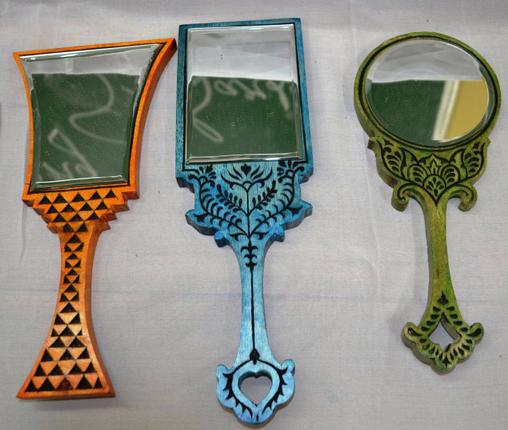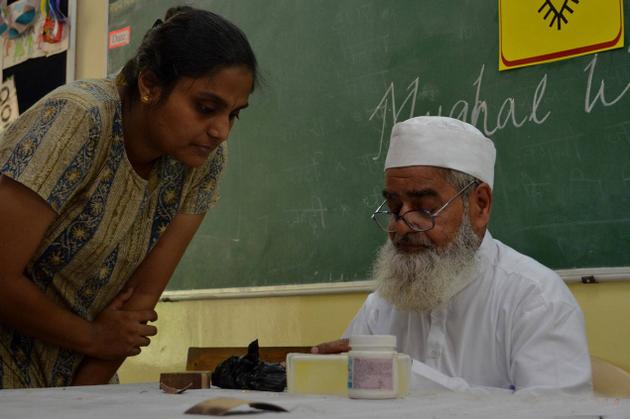
Hapur-based Sardar Hussain lends freshness to Mughal wood carving.
Surrounded by eager participants who show off their handiwork, Sardar Hussain has a beatific smile on his weather-beaten, bearded face as he patiently explains the nuances to the youngsters at one of the intensives at the recent SPIC MACAY’s International Convention. That the shilpa guru is the fourth generation craftsman who has mastered the Mughal technique of wood carving and is the recipient of many a National and international recognition (UNESCO Seal Of Excellence Award) for his craft sits easy on his fragile shoulders.
Mughal carving, as the name suggests, is a tradition that traces back to Persia and was aimed at royal palaces. So, the work itself is a smooth marriage of intricate floral patterns on a grand scale. Sardar Hussain’s family began small but over generations, things have changed. He came into prominence when he was conferred the National Award for making wooden blocks in 1981. He says, “Traditionally, we made blocks but soon we realised that it was not a perennial source of income. So, I reinvented the craft by exploring and expanding the vocabulary during the Golden Age Exhibit at the Festival of India in 1985. I manufactured a wooden box and a round block. I used that block as a lid. I tried a similar thing with square boxes and blocks. What I also did is to use brass inlay on the carved works. And viola! a new craft was born.”

Today, Sardar Hussain runs a thriving export business called Sajawat Handicrafts in his hometown in Chhipiwara, Hapur District of Uttar Pradesh. He is assisted by his sons, both also National Award winners. And among their clients are Fab India and CCI. Says Hussain, “We work with designers from these outlets and create articles according to their requirements. That way we are sure of our work reaching customers.” Taking about the craft itself, he says, “The most important aspect here is the finish. The end product is a reflection of your skill and unless that is in places, the piece falls flat.” The wood used is mostly sheesham but the artisan also uses mango wood these days. “The advantage of mango wood is that its texture allows for it t be painted in different colours.”
Today, Sardar Hussain’s oeuvre includes jewellery boxes, pen stands, brightly hued hand mirrors, bangle boxes, wall hangings, photo frames and of course, blocks. Though he does workshops off and on, he feels “What is needed today is for the youngsters to take to a craft with sustained interest. And keep at it till they perfect it. That is somehow lacking today.”
And yes, the wizened craftsman has kept pace with technology, thanks to his children. His entrepreneurial venture is accessible on the Internet (sajawathandicraft.com) and he can be contacted at sajawat.handictaft@gmail.com
source: http://www.thehindu.com / The Hindu / Home> Features> Friday Review / by Savitha Gautam / New Delhi – July 31st, 2014








